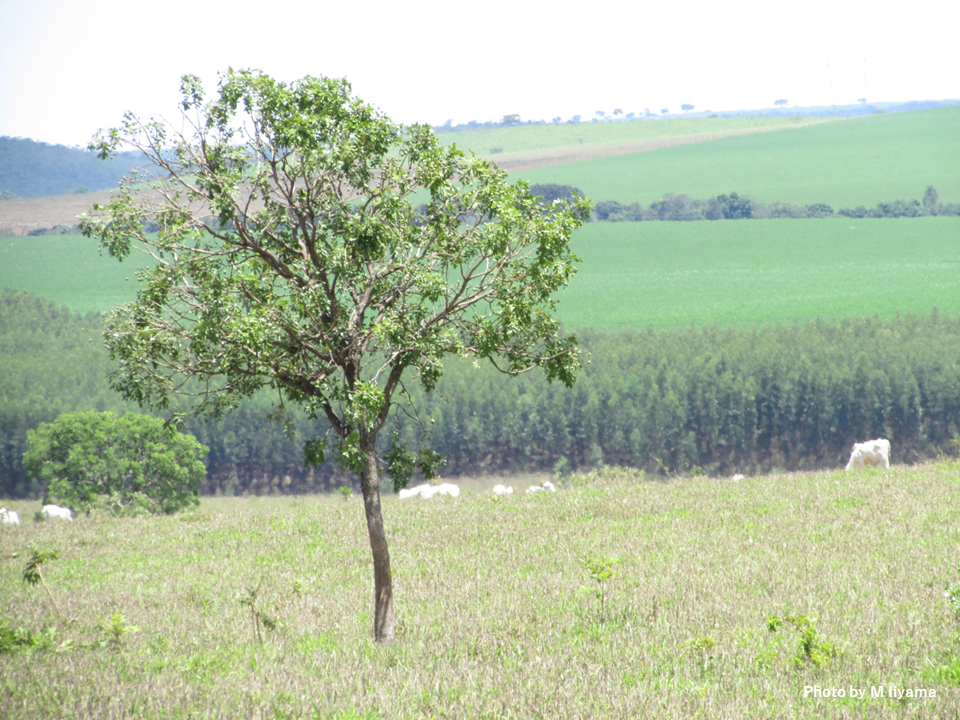Pick Up
970. Food Production and Conservation in the Cerrado

970. Food Production and Conservation in the Cerrado
The Cerrado is a savanna on the Brazilian plateau and the world's breadbasket, but deforestation has been progressing due to the expansion of agricultural land. At the end of February, the World Economic Forum, in collaboration with Systemiq, has released a white paper highlighting the need for an approach that balances sustainable food production with conservation of the region's natural riches.
Located in central Brazil, the Cerrado is 5.5 times the size of Japan or the equivalent of the United Kingdom, France, Germany, Sweden and Spain combined, and accounts for 23.3% of Brazil's total land area. The Cerrado is also rich in biodiversity, representing 5% of terrestrial species and 14% of Brazil's freshwater resources.
On the other hand, the area was once considered infertile due to low soil fertility, and agricultural development was limited to beef cattle production until the mid-1970s. However, as a result of government-led development, which provided farmers with cheap farmland and led to major investments in breeding, soil management and transportation infrastructure, the Cerrado became the world's breadbasket in less than 40 years from the late 20th century. Stable rainfall and mild temperatures allow crops to be harvested three times a year in some places. The Cerrado now accounts for 60% of Brazil's agricultural production, 22% of the world's soybean production, and 23% of the world's sugarcane production, making it an integral part of global food security.
The success of the Cerrado, which has been called a miracle, has also come at an enormous environmental cost. Compared to the tropical forests of the Amazon to the north, the Cerrado has received little global attention and lacks adequate legal protection, which has led to deforestation in the region. According to government data, deforestation in the Amazon slowed to 4,000 km2 last year, down 62% from the previous year, while deforestation in the Cerrado soared to 7,800 km2, up 43% from the previous year. Most of the Cerrado's total area (84%) is privately owned, and only 8% has been designated as protected areas, an underestimate compared to the 46% of the Amazon's land that has been designated as protected. Agricultural conversion in the Cerrado occurs mainly on private land, with 65-80% of private land under agriculture (compared to 20% in the Amazon). Extremely low land prices in the Cerrado are also an incentive to expand and cultivate agricultural land, and half of the Cerrado's vegetation has already been burned.
If current trends continue, the ecosystems on which Brazil's soy, cattle, sugarcane and corn production depend could collapse, threatening global food security and causing enormous economic losses. As the world grapples with climate change and biodiversity loss, there is an urgent need to conserve the Cerrado's nature and ecosystems for the sake of future generations.
The report finds that balancing conservation and sustainable agricultural production in the Cerrado region could bring $72 billion in annual benefits to the Brazilian economy by 2030. As a concrete way to achieve sustainable agricultural intensification in the Cerrado, the report suggests promoting low-GHG agricultural practices such as crop-livestock systems, agroforestry, no-till farming, and regenerative agriculture on degraded rangelands, while reducing the conversion of natural vegetation to agricultural land.
Reference
World Economic Forum (2024) The Cerrado: Production and Protection WHITE PAPER FEBRUARY 2024. https://www3.weforum.org/docs/WEF_Sustainable_Transition_Cerrado_2024.p…
Contributor: IIYAMA Miyuki (Information Program)
